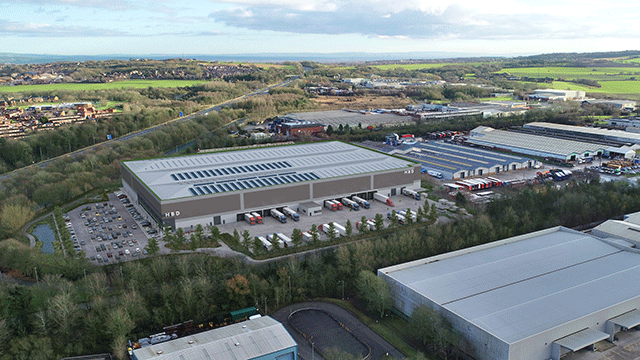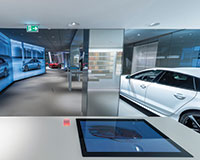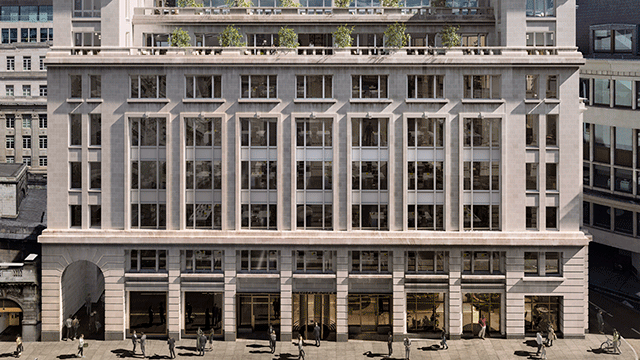In 2012 Audi City opened up shop at 75 Piccadilly W1.
At just 650m2 (7,000 sq ft) it is a small showroom, even by the space-starved standards of central London. But Audi claimed it could showcase every single version of every single car in its range – virtually.
In the chic, black and brushed-silver space, customers’ fingers drift over touchscreen panels, selecting which model, what colour, what little customisations they desire. Huge screens display, in pinpoint detail, every possible modification, every trim, every iteration of every model. Indeed, it can create more than 3.5m different combinations.
To have all these options available on a traditional car lot would require hundreds of acres of space. But at Audi City it simply requires a small, prime location and some technical wizardry.
For Chris Burke, director at Turner & Townsend, which delivered the showroom for Audi, it is an obvious evolution. “All of retail is going down this route, towards a more virtual, omni-channel platform,” he says. “The car retailing industry is just starting to embrace this.”
The use of virtual technology to allow even a West End broom closet to become a viable car dealership has led to many, including Audi itself, proclaiming that this was the future of car showrooms.
Audi announced that it wanted to open 20 such sites by 2015, and other luxury marques rushed to follow suit – BMW, Mercedes, and VW Group stablemate Porsche.
But two years down the line, has the virtual become reality?
Audi has so far opened just three of these virtual showrooms, one in Beijing and one in Berlin as well as the flagship and first in London. But the low numbers are not because of a waning of ambition. For the concept to work it requires a genuinely prime location. In London, for example, only Mayfair will do. In Berlin, it is on the world-famous Kurfurstendamm shopping strip. In Beijing it occupies a prime slot in Oriental Plaza. “They are looking at other sites, but obviously they are having to compete with every other luxury brand,” says Burke.
Audi is believed to be in negotiations for space on New York’s Fifth Avenue and in central Paris. Mercedes meanwhile has opened a similar venture in Madrid, BMW in Paris, and Porsche wants to follow suit in London and Berlin.
“The target audience is high net worth individuals,” says Burke. “They are based in Mayfair – they work there or live there or are staying there. They have no need or desire, or the time, to go to Audi West London.”
The idea is that these people look online, decide what they want, go to somewhere like Audi City to see it all put together on a shiny big screen, and then have the finished car delivered to them.
The virtual market appears to be growing, as marques are discovering that a sizeable proportion of their audience is happy to buy a car without ever actually touching it before they collect the keys.
But it seems unlikely that this “future of car showrooms” will become the norm anytime soon.
“Virtual showrooms are great, but they won’t take off in the smaller cities,” says Adam Chapman, presently at GVA but soon to set up a new roadside function at Knight Frank with his colleague Tom Poynton.
Poynton agrees: “It has to be done that way in London because they don’t have the space.”
In reality, he says, it is the ultimate split-site facility. “It allows them to look in their lunch break and then test drive at the weekend.”
The same could be said for the internet. According to a recent study by Frost & Sullivan, about 5% of all cars will be sold online by 2020. Some companies are already doing so, Dacia being a strong example. It has used its online sales channels to expand aggressively across Europe, only using traditional dealerships as a backup. Another is US-based electric car manufacturer Tesla (see profile, p8)
But Poynton argues that the internet has already become a vital component of most car sales. “It is easy to find yourself looking at a new car on the internet even if you don’t want one. That’s how it starts.”
From there on in, people can, and do, amass a huge amount of information about what they want.
John Roberts, director of automotive and roadside in Colliers’ Birmingham office, believes the internet is making customers more savvy. “Every customer who comes through the showroom door is now an informed, ready to buy, ‘genuine’ customer.”
And this is having a huge impact on all car showrooms, not just those at the cutting edge.
“The key thing now is the customer experience,” says Chapman. “They want the experience to be the same across the brand and to reflect the aspirations of the brand.”
“There is no longer a need to hard-sell,” says Burke. “Most people who walk through that door already know what they want, or at least that they want something. They have done their browsing online.”
Because of that, the marques at the top of the market have been frantically improving their showrooms. “The drivers behind the change in the appearance of motor dealerships have been the manufacturers who have wanted to improve their brand image and market share by the physical appearance of the dealerships,” says Roberts.
VW Group is using a sale and leaseback programme, what it calls cost recovery, in order to bring all its showrooms up to its new, shinier standard.
“I think this cost recovery trend could develop,” says Alastair Coates, director of petroleum and automotive at CBRE. “But it won’t become dominant because the developers will be in control of the sites. Even then the marques will insist on high-quality design and build.”
“The general trend has been to double the size of showrooms and to move to the town fringes, where beautiful shiny gin palaces can be built,” says Poynton.
But the shiny gin palaces are not exuberant or unnecessary, Chapman adds. “Those brands that have seen their market share rise most strongly correlate exactly with those that have invested strongly in their premises.”
And those that have not, which means most of the French brands and Ford – though Ford is catching up, redeveloping its site in Bristol – are suffering.
“The ones to look at,” Poynton adds, “are the emerging brands. The Far-Eastern ones, like Kia, are the ones that are doing it right.”
“What they are trying to do,” says Chapman, “is factor out that traditional mistrust. Openness is being factored in.”
Many showrooms now have only transparent partitions, just to hammer home the idea of openness. Nissan is removing all of its internal walls and creating windows through to the garages, in an attempt to “demystify” the experience of buying or fixing a car.
“They all have big reception areas, cafés,” says Poynton. “Not just hot drinks but hot food, while you wait.”
“More and more car showrooms are looking like Apple stores,” says Burke.
Meanwhile in the US, BMW is taking another lead from Apple, by filling its showrooms with iPad-wielding “geniuses”. The BMW Genius Everywhere programme, being rolled-out across the US, sees tech-savvy college-types offering advice and know-how, but vitally not selling cars.
And there are other innovations creeping in. Burke has recently looked into a climate controlled parking bay for a showroom in St Petersburg. “You drive into a glass box and the doors would shut and the temperature would go up. Then you get out and into the showroom, without ever having to brave the -40º blizzard outside.”
This is part of a trend that is sweeping car showrooms on both sides of the Atlantic. “What is happening, I suppose,” says Poynton, “is that car retailers are starting to realise they are the same as any other retailer.” They must embrace the internet, embrace technology and most importantly, embrace their customers.
The gleaming, shining virtual world of Audi City may not be the future for all car showrooms. But Burke describes what is really happening: “Finally, the technology in the showrooms is catching up with the technology in the cars.”
Volkswagen’s new £15m showroom in West London is the epitome of what in-town showroom will become. It is located by a main junction, and its 14,600m2 (157,000 sq ft) site is on four floors to make the most of its typically small urban site.
It is car friendly. “What many people seem to forget – and I mean planning committees – is that most people drive to get to a car showroom,” says Burke, who is project managing the build.
The main entrance is not, for instance, on the ground floor. It is on the first floor, and opens onto the car park. “There is a pedestrian entrance as well,” says Burke, “but 95% of customers will come in this way”.
Audi City – facts and figures
• The Audi City showroom at 75 Piccadilly covers two floors and 650m2 (7,000 sq ft) of space.
• It houses just one car and 420m2 of digital interactive screens.
• The fit-out cost for Audi City was around £4m, with an extra £2m for the technology that powers it. An average new car showroom will cost in excess of £20m to fit out.
• Since opening in 2012 sales have risen by 75%.
• One of Audi’s top five performing showrooms in the UK.
Virtual showrooms – brand or business?
“Is it brand or is it business? It is probably somewhere between the two,” says Turner & Townsend’s Chris Burke.
Prior to AudiCity opening its virtual portal, there was an existing Audi showroom on the site. It had around four or five cars and very little else. Anyone wanting to see anything else was handed a brochure and directed to the main dealership in west London.
“In a way, that was more about brand. It was more or less an advertisement,” says Burke. “With the new space you can see the whole range. And that has had a huge impact on sales.”
That Audi City would be a successful sales environment was, apparently, an unexpected boon for the marque.
“Their inspiration was to retain the retail space, but it was intended to be more about the brand and the experience than actual sales,” says Burke. “The increase in sales was something they hadn’t anticipated.”
In fact, sales from the site rose by over 70%, with the virtual showroom selling on average seven cars a week. And each of these cars is, on average, £8,000 more expensive than previously, as customers now have access to all the little add-ons and customisations that they fancy. Within months of its opening the Mayfair site became one of Audi’s top five-performing dealerships in the UK.
The rise of the motor park
A glance at the statistics show that there are now fewer dealerships.
“We estimate there to be around 4,850 franchised dealerships in the UK, representing 42 brands. This number is down approximately 20% from a decade ago,” says GVA’s Adam Chapman.
But that doesn’t mean the market is shrinking. Far from it.
“Over this period the average size of the ‘typical’ dealership has almost doubled,” adds Chapman’s GVA colleague Tom Poynton.
“Consequently, despite the decline in site numbers, like-for-like total registrations are broadly static. While growth in sales volume is expected in the next few years, we anticipate further ‘rationalisation’, albeit at a much slower rate, until such time that manufacturers have completed the consolidation of their retail networks.”
And at the forefront of this trend for rationalisation is VW Group.
“We are seeing VW leading the way,” says CBRE’s Alastair Coates. “They did this first in Sheffield in 2008. They closed seven dealerships in the Sheffield and Chesterfield area and consolidated into one 100,000 sq ft hub.”
At that hub VW can showcase all its models from all of its brands, from Audi to Bentley, Seat to Skoda.
And VW has repeated that model again and again, most recently in North Wales. Showrooms and dealerships from Anglesea to Flintshire have been resited at one hub at Llandudno junction, Lightcliffe.
The new facility, which opened last month, is a prime example of this move to fewer, larger sites.
What is steadily becoming a trend, since the first one in the UK opened in 2003, is the giant motor park – a conglomeration of dealerships and showrooms and different marques, all on one campus.
“It is just not viable to build big facilities in places where there could be alternative uses,” says Poynton. “So these uses have grouped in new space.”











